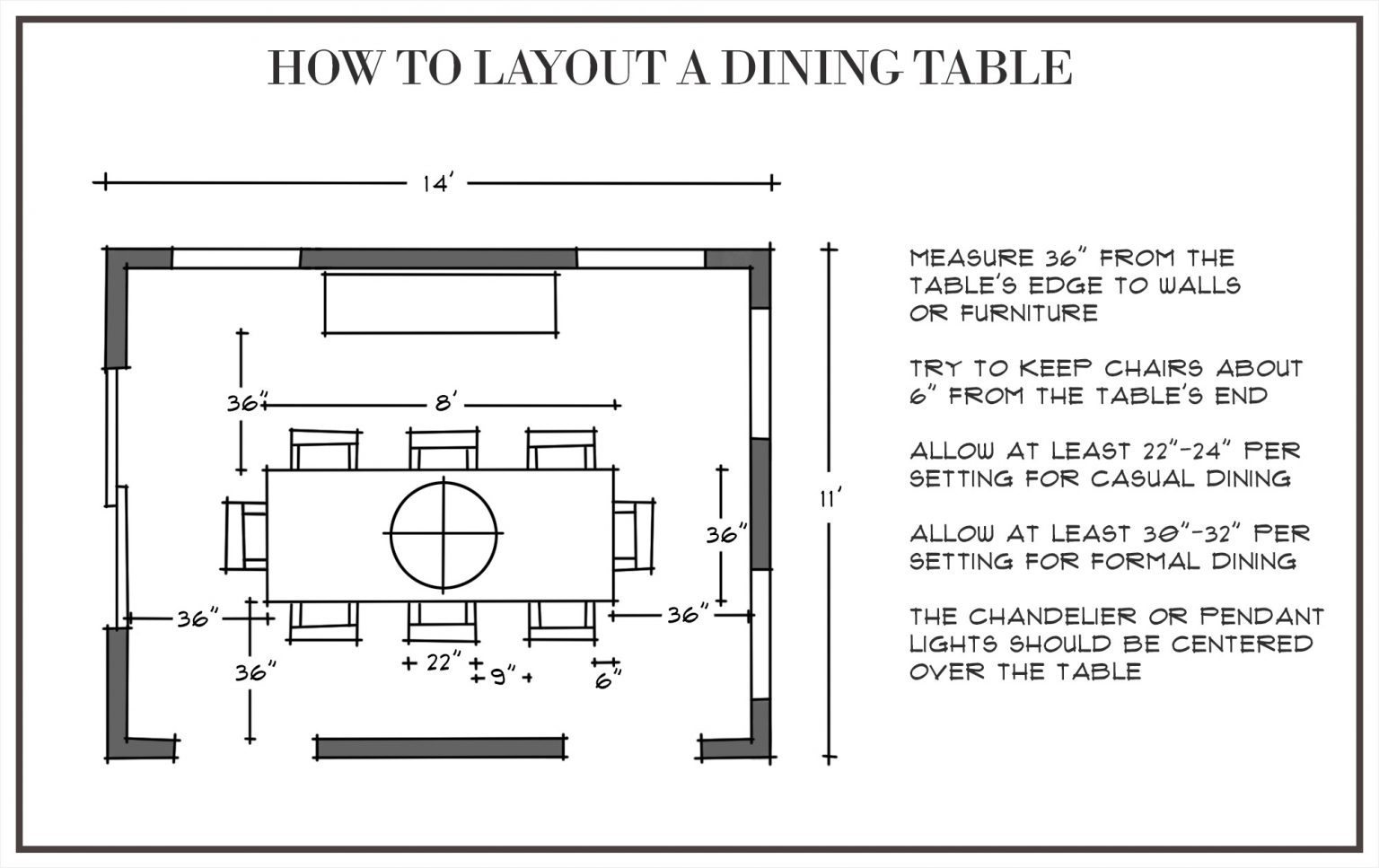Ergonomics and Comfort

Ensuring sufficient space behind dining chairs is paramount for creating a comfortable and functional dining experience. Adequate space allows for ease of movement, prevents collisions, and enhances overall user comfort. This section will delve into the impact of chair back heights on required space, provide minimum space recommendations, and illustrate ideal chair placement for optimal dining ergonomics.
Impact of Chair Back Height
The height of a dining chair’s back significantly influences the amount of space required behind it. Chairs with taller backs necessitate more clearance to allow for comfortable leaning back and prevent discomfort or bumping into objects. Conversely, chairs with lower backs generally require less space.
Minimum Space Requirements
Determining the minimum space behind dining chairs involves considering both chair type and user height.
Chair Type and Space Requirements
- Standard Dining Chairs: For typical dining chairs with moderate back heights, a minimum of 30 inches (76 cm) of space behind the chair is recommended. This provides ample room for comfortable leaning and movement.
- High-Back Dining Chairs: Due to their taller backs, high-back chairs require more space. Aim for a minimum of 36 inches (91 cm) behind the chair to ensure sufficient clearance for comfortable leaning and to avoid any discomfort.
- Armchairs: Dining armchairs often have wider backs and arms, necessitating a minimum of 36 inches (91 cm) of space behind the chair. This allows for comfortable arm placement and prevents bumping into nearby objects.
User Height and Space Requirements
- Tall Individuals: Taller individuals generally require more space behind the chair to comfortably lean back and avoid hitting their head on any objects. Aim for a minimum of 36 inches (91 cm) or more, depending on the individual’s height and the chair’s back height.
- Average Height Individuals: For individuals of average height, the recommended minimum space behind the chair is 30 inches (76 cm). This provides ample clearance for comfortable movement and leaning.
- Short Individuals: While shorter individuals may require less space, it is still recommended to maintain a minimum of 24 inches (61 cm) behind the chair. This ensures adequate clearance for comfortable movement and prevents any potential discomfort.
Ideal Chair Placement
To illustrate ideal chair placement, consider a dining table with a rectangular shape. The chairs should be positioned at least 30 inches (76 cm) away from the wall behind them, allowing for comfortable movement and preventing any potential collisions. For chairs with taller backs or armchairs, a minimum of 36 inches (91 cm) is recommended.
Example: In a dining room with a rectangular table measuring 6 feet (183 cm) in length, the chairs should be placed at least 30 inches (76 cm) away from the wall behind them. This creates ample space for comfortable dining and movement.
Dining Room Layout and Functionality: Space Behind Dining Chair

The spacing between dining chairs plays a crucial role in determining the overall flow and functionality of a dining room. It influences the ease of movement, the dynamics of social interactions, and the overall aesthetic appeal of the space.
Chair Spacing and Overall Flow
The spacing between chairs directly affects the ease of movement within the dining room. When chairs are spaced too closely, it can create a cramped and uncomfortable atmosphere, making it difficult for people to move around freely. Conversely, chairs spaced too far apart can make the room feel empty and disconnected.
- A comfortable spacing for dining chairs is generally considered to be between 18 to 24 inches. This allows ample room for people to comfortably sit and get up from their chairs without bumping into each other.
- The optimal spacing also depends on the size of the dining table. A larger table requires more space between chairs to accommodate more people comfortably.
Chair Spacing and Placement of Other Furniture
The spacing between dining chairs also affects the placement of other furniture in the dining room. For example, if the chairs are spaced closely together, it might be difficult to place a buffet or a sideboard near the dining table.
- When planning a dining room layout, it is important to consider the flow of traffic and the placement of other furniture pieces. A good rule of thumb is to allow at least 3 feet of clearance between the dining table and any other furniture.
- This clearance allows for easy access to the table and prevents furniture from being bumped into.
Chair Spacing and Dining Etiquette
The spacing between chairs can also influence dining etiquette and social interactions. When chairs are spaced closely together, it can create a more intimate and informal atmosphere, encouraging conversation and interaction between guests. Conversely, chairs spaced further apart can create a more formal and distant atmosphere.
- In a formal setting, it is customary to leave at least 2 feet of space between chairs to allow for comfortable movement and conversation.
- In a casual setting, the spacing can be closer, around 18 inches, to encourage a more relaxed and intimate atmosphere.
Comparison of Dining Room Layouts
| Layout | Chair Spacing | Pros | Cons |
|---|---|---|---|
| Linear | Closely spaced chairs along one side of the table | Efficient use of space, good for smaller rooms | Can feel cramped, limited interaction between guests |
| Circular | Evenly spaced chairs around a circular table | Promotes interaction and conversation, good for larger groups | Can be difficult to navigate, may not be suitable for all room shapes |
| Square or Rectangular | Evenly spaced chairs around a square or rectangular table | Versatile, can accommodate different group sizes | Can feel less intimate than other layouts |
Design and Aesthetics

The space behind dining chairs presents a unique opportunity to elevate the visual appeal of your dining room. By strategically utilizing this often-overlooked area, you can create a more cohesive and aesthetically pleasing dining experience.
Decorative Elements and Storage Solutions, Space behind dining chair
Incorporating decorative elements and storage solutions behind dining chairs can add depth and visual interest to your dining room.
- Wall Art and Mirrors: Hanging artwork or a mirror behind chairs can create a focal point and draw the eye to the space. Consider using a gallery wall with a collection of framed prints, photographs, or even tapestries. Mirrors can also help reflect light and make the room feel larger.
- Floating Shelves: Installing floating shelves behind chairs provides a practical and stylish way to display decorative objects, books, or even plants. Choose shelves that complement the style of your dining room and arrange items in a visually appealing manner.
- Wall-Mounted Storage: Utilize wall-mounted storage solutions like coat racks, hooks, or shelves to organize items like hats, scarves, or even bags. This helps keep clutter at bay and adds a touch of functionality to the space.
Lighting and Color
Strategic lighting and color choices can effectively highlight the space behind dining chairs and enhance the overall ambiance of your dining room.
- Ambient Lighting: Use overhead lighting to create a warm and inviting atmosphere. Consider using a chandelier or pendant light fixture that complements the style of your dining room.
- Accent Lighting: Accentuate decorative elements or artwork behind chairs with strategically placed sconces or spotlights. This adds dimension and draws attention to specific features.
- Color Choices: The color of the walls and chairs can significantly impact the visual appeal of the space behind chairs. Use a neutral backdrop for a classic look, or experiment with bolder colors to create a more vibrant and energetic ambiance.
Chair Designs and Dining Room Styles
The choice of dining chairs can significantly influence the overall style and aesthetic of your dining room. Consider selecting chairs that complement the design of your table and the overall style of the room.
- Modern Dining Room: Modern dining rooms often feature sleek and minimalist chairs with clean lines and geometric shapes. Consider chairs made of materials like chrome, leather, or acrylic for a contemporary look.
- Traditional Dining Room: Traditional dining rooms often feature chairs with ornate carvings, tufted upholstery, and classic designs. Look for chairs made of wood with rich finishes and comfortable padding for a timeless elegance.
- Rustic Dining Room: Rustic dining rooms often feature chairs with a more casual and natural look. Consider chairs made of reclaimed wood, woven materials, or leather for a relaxed and cozy feel.
Space behind dining chair – Ever feel cramped at the dinner table? The space behind your dining chair might be the culprit. A good solution? The amelia solid wood dining chair is designed with a sleek, space-saving profile, allowing for comfortable seating without sacrificing precious room behind you.
This way, you can enjoy your meal without feeling like you’re stuck in a box.
You know that awkward space behind your dining chair? The one that’s begging for a little something? Maybe you’ve considered a small plant, a decorative piece, or even a storage basket. But if you’re looking for a more substantial addition that will also elevate your dining experience, consider a Wisconsin Chair Company dining set.
These sets are known for their timeless elegance and quality craftsmanship, and they’re sure to make a statement in any dining room. Plus, with the right set, you can create a more cohesive look, adding to the overall ambiance and maximizing that space behind your chair.
